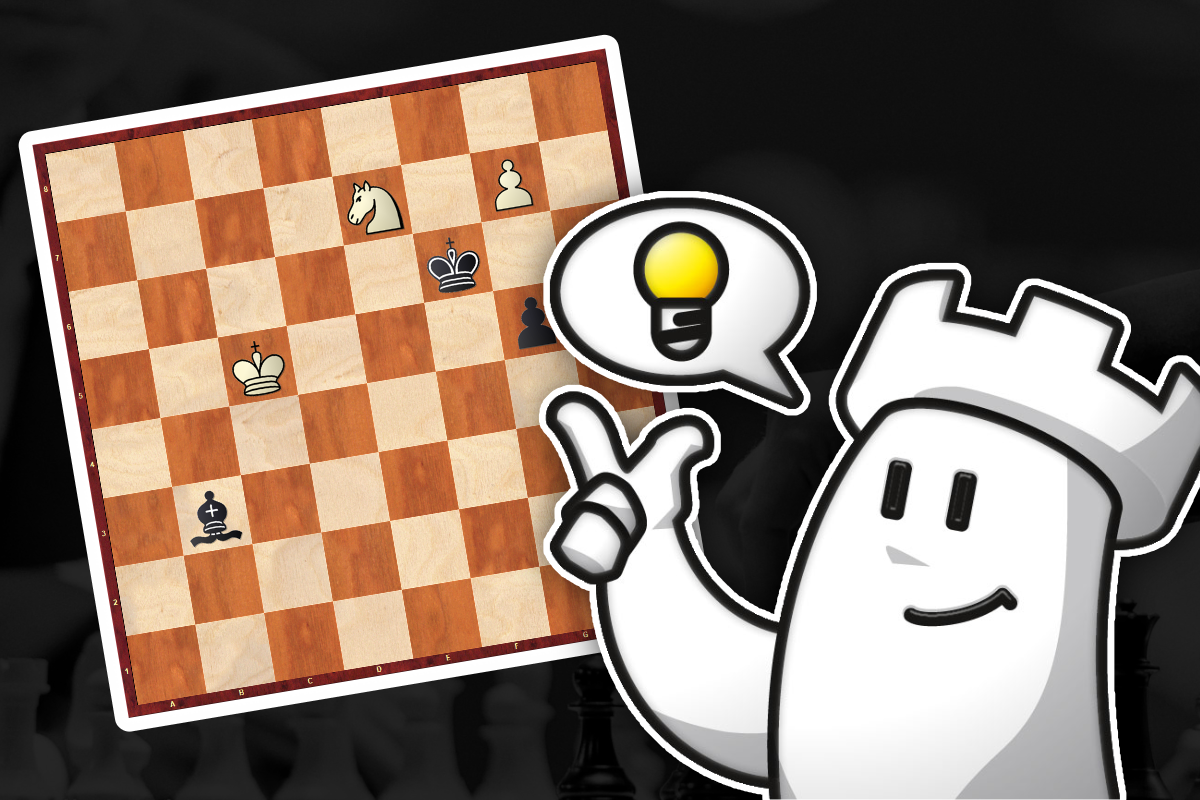


It was, by all means, just another tough tactical position in a study session using the ChessBase Tactics web app. 2341 Elo difficulty was the warning given for the opening move.
It is often hard to know what to expect honestly, since the ratings can be misleading to the extreme at times. White to play and win I am told. The position has obvious characteristics of impending pawn promotions, so let's find out what the sequence is to make that happen. I start with some obvious choices, but nothing seems to lead anywhere. For example, 1. Nd5 Kf7 and then what? How about 1. Kd6? Maaaybe. I cast a wide net in my preliminary calculations, but really nothing seems to lead anywhere. At least not in the short term. More time wracking my brain for a tactical sequence leads nowhere and eventually it becomes clear that standard calculations, short of being a computer myself, isn't cutting it. I am strongly tempted to ask for a hint, but having failed the previous position (one looking very much like a bizarre computer line) I am feeling very stubborn. I am going to solve this one, damnit.
Ok, so let's throw out the expectation of a tactical solution, and just try to understand what we have here.
The first thing I noticed was that after 1. Nd5, Black cannot exchange the bishop for the knight with 1... Bxd5 2. Kxd5 since the pawn endgame is dead lost.
Also, promoting immediately is a draw. 1. g8:Q Bxg8 2. Nxg8 Kg6 and after 3...Kh7 White's last pawn is lost.
The next point that soon becomes apparent is that the knight on e7 has magic powers. If you ever admired those movies about immortals, then the knight is the chess equivalent. So long as it stays on e7 that is. The reason is that it cannot be captured there, ever.
Obviously, if the knight is taken as it is, then White plays h7 and one of those two pawns is going to queen. This is true even with the Black bishop on f7, since again h7 would be played and one of those two pawns is going to be promoted.
So is there anything else? Yes, the next item is that Black's g-pawn serves two purposes. The first is that it too can run to promote if White is so bold as to forget it even exists. So lines with Kd6 can become problematic.
The second detail is an insidious mate threat if White makes a mad dash for the h5 square. Again, just to illustrate, consider this position below:
Ok, that pretty much covers the various concepts that characterize the position, but now what? Well, it is now clear that the g-pawn is the essential cog in Black's defense and is what must be targeted.
The first move in the solution is indeed 1. Nd5 and since Black dare not capture it, the only move to stop the g-pawn is 1...Kf7. We know the g-pawn is our target, and we also know we must stay in the promotion square (a thanks to Karsten Mueller for his endgame lessons!) so 2. Kd6 is not possible, so the move is 2. Kd4!
Now Black is in a quandary.
If 2... Ba2 3. Ke5 is curtains for Black. The g-pawn cannot escape as the king must keep the g- and h-pawns in check. Black's best chance instead is 2... g4! Why? Because it still forces White to come up with one more good move to wrap it up.
Remember that insight on the Ne7 and its bullet proof vest? 3. Ne7!! is the killer blow. Because the knight is untouchable, the white king can comfortably chase the lone helpless g-pawn after which it is an easy 1-0.
Although the ideas of 'conceptualization' as opposed to 'tactical' are very human ways to describe the process of finding moves, these are necessary tools for players to penetrate the truth in a given position. Still, sometimes one must combine the two to determine the best continuation as was the case here.
Click here to subscribe to ChessBase Account Premium and unlock its many wonderful tools.
| Advertising |